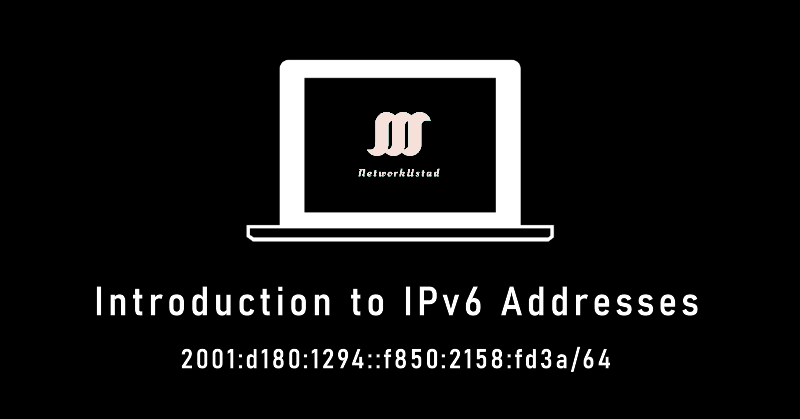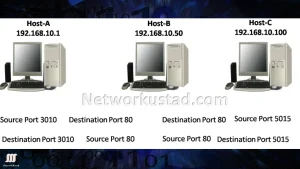The IETF developed IPv6 addresses to overcome the limitations of IPv4, meeting current and future network demands. In 2025, its 128-bit address space addresses the global IP shortage. It is an excellent development with features that better suit current and future network demands. In 2025, IPv6 adoption has accelerated due to the global surge in IoT devices, 5G networks, and smart city initiatives, addressing IPv4’s limitations with unprecedented scalability
Unlike IPv4’s 32-bit address space, yielding ~4.3 billion IPs, IPv6’s 128-bit address space offers 340 undecillion addresses, a critical advantage in 2025’s connected world. Therefore, it has a vastly enlarged address space compared to IPv4. The 32-bit IPv4 address space provides approximately 4,294,967,296 unique addresses. However, the IP version 6 address space provides 340,282,366,920,938,463,463,374,607,431,768,211,456, or 340 undecillion addresses, which is almost equal to each particle of sand on Earth.
IP version 6 has three types of addresses, which are the following:
- Unicast addresses. A packet is delivered to one interface.
- Multicast addresses. A packet is delivered to multiple interfaces.
- Anycast addresses. A packet is delivered to the nearest of multiple interfaces.
The features provide an IPv6 address.
- Increased address space—IP version 6 addresses have 128-bit hierarchical addressing, compared to IP version 4, which has 32 bits.
- Improved packet handling—The IP version 6 header has to be very simple, with fewer fields than the IP version 4 packet header.
- Eliminates the need for NAT—Due to the many public IP version 6 addresses, no NAT is needed. This avoids some of the NAT-induced application problems experienced by applications requiring end-to-end connectivity.
As of 2025, IPv6’s simplified header enhances performance in 400 Gbps networks, while its support for multicast is pivotal for efficient data distribution in cloud gaming and virtual reality applications.
Advantages
- Increased Capacity: IPv6’s 128-bit addresses accommodate the 2025 surge in devices. Efficient Routing: Hierarchical prefixes reduce routing table sizes. More Efficient Packet Processing: Simplified headers boost 2025 network performance.
- Efficient Routing: IP version 6 allows for easy aggregation of prefixes assigned to IP networks. Also, reduces the size of routing tables and makes routing more efficient and hierarchical.
- More Efficient Packet Processing: IPv6’s simplified packet header makes packet processing more efficient in contrast with IPv4
- Efficient Data Flow: IP version 6 supports multicast and not broadcast. Multicast allows bandwidth-intensive packet flows to be sent to several destinations simultaneously, saving network bandwidth.
- Security: IP version 6 improved due partly to improved authentication methods built into network firewalls.
- Simplified Network Configuration: Address auto-configuration (address assignment) is built into IPv6, making network configuration simple.
- Support for New Services: Eliminating Network Address Translation (NAT) restores true end-to-end connectivity at the IP layer, enabling new and valuable services.
- Security: IPsec, which provides confidentiality, authentication, and data integrity, is available in IP version 6.
Real-World Impact in 2025
In 2025, IPv6’s efficient routing reduces latency in 5G deployments, while its built-in security supports zero-trust models in enterprise networks, driving its adoption in healthcare and finance sectors.
Disadvantages
- Conversion: IPv4 is still widely used worldwide, and it isn’t easy to convert to an IPv6 Address.
- Readability: IPv6 Subnetting can be challenging to understand. In contrast to IPv4, remembering the IP addresses will be much more complicated.
- Communication: IPv4 and IPv6 equipment cannot communicate directly with each other; communicating between IPv4 and IPv4 requires more configuration.
- Transition: Switching to IPv6 from IPv4 is very slow and tedious.
- IPv6 Address is not supported in the old operating systems and devices.
In 2025, transition challenges are mitigated by tools like IPv6 Rapid Deployment (6rd) and government mandates in regions like Europe, though legacy device compatibility remains a hurdle.
Future Outlook for IPv6 in 2025
By 2025, IPv6 is poised to dominate with over 40% global adoption, fueled by IoT expansion and 5G rollouts. Innovations like Segment Routing over IPv6 (SRv6) enhance traffic engineering, promising a robust future.
FAQs
What makes IPv6 addresses different from IPv4
IPv6 uses 128-bit hexadecimal addresses (e.g., 2001:0db8:85a3::8a2e:0370:7334), providing trillions of IPs in 2025, far surpassing IPv4’s 32-bit limit.
How does IPv6 Addresses enhance network security?
IPv6 integrates IPsec (Internet Protocol Security) by default, encrypting data and ensuring secure communication across networks.
Is IPv6 Addresses adoption mandatory now?
While not mandatory, IPv6 adoption is increasingly essential in 2025 to support IoT and 5G, driven by IPv4’s address exhaustion.
Does IPv6 Addresses work with older IPv4 systems?
Yes, dual-stack configurations allow devices to run IPv4 and IPv6 simultaneously, easing the transition process.
Why is IPv6 Addresses essential for IoT growth?
IPv6’s vast address pool supports billions of IoT devices, eliminating NAT complexities and enabling direct, seamless connectivity.
What drives IPv6 adoption in 2025 networks?
In 2025, IPv6 adoption is driven by IoT growth, 5G demands, and IPv4 exhaustion, with governments and ISPs leading the charge.
How does IPv6’s multicast benefit modern applications?
IPv6’s multicast, widely used in 2025 for streaming and gaming, reduces bandwidth usage by delivering packets to multiple destinations efficiently.
What challenges persist in IPv6 transition in 2025?
In 2025, challenges include legacy system compatibility, slow enterprise adoption, and the cost of upgrading infrastructure





